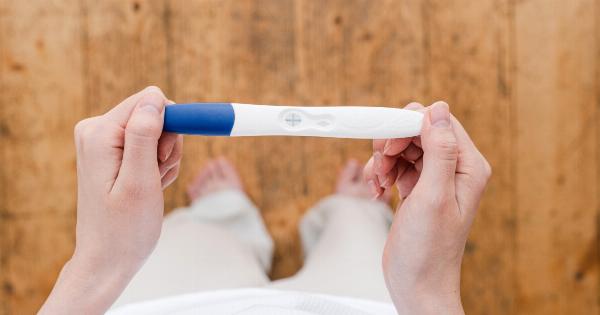Complications during the first trimester of pregnancy can have a profound impact on future pregnancies. These complications can vary in severity and are often associated with adverse outcomes.
Understanding the potential risks and consequences of these complications is crucial for both healthcare professionals and expectant mothers. In this article, we will explore the various first-trimester complications and their potential effects on future pregnancies.
1. Threatened Miscarriage
One of the most common first-trimester complications is a threatened miscarriage. This occurs when a woman experiences vaginal bleeding and lower abdominal pain but does not go on to have a miscarriage.
While the immediate pregnancy is at risk, the prognosis for future pregnancies is generally not affected.
2. Recurrent Miscarriage
Recurrent miscarriage, defined as three or more consecutive pregnancy losses before 20 weeks of gestation, can have significant implications for future pregnancies.
It may indicate underlying genetic, hormonal, immunological, or anatomical factors that can increase the risk of future miscarriages. Comprehensive investigations and appropriate management are crucial in improving the chances of a successful future pregnancy.
3. Ectopic Pregnancy
An ectopic pregnancy occurs when a fertilized egg implants outside the uterus, most commonly in the fallopian tube. This can result in a life-threatening situation for the mother and, unfortunately, the affected pregnancy is not viable.
While the occurrence of an ectopic pregnancy does not necessarily impact future pregnancies, women who have had one are at an increased risk of having another ectopic pregnancy.
4. Gestational Trophoblastic Disease
Gestational trophoblastic disease (GTD) is a group of rare tumors that develop from the placenta or the cells that would normally form the placenta. This includes hydatidiform mole, invasive mole, placental-site trophoblastic tumor, and choriocarcinoma.
While GTD has a high cure rate, it can affect future pregnancies. The risk of recurrence and the need for close monitoring and follow-up vary depending on the type and stage of GTD.
5. Hyperemesis Gravidarum
Hyperemesis gravidarum is a severe form of nausea and vomiting during pregnancy that can lead to dehydration, weight loss, and electrolyte imbalances.
While it poses immediate risks to the current pregnancy, its impact on future pregnancies is generally limited. However, women who have experienced hyperemesis gravidarum in one pregnancy may have an increased risk of recurrence in subsequent pregnancies.
6. Intrauterine Growth Restriction (IUGR)
Intrauterine growth restriction refers to a condition in which a fetus does not reach its full growth potential in the womb.
It can occur due to various factors, including placental insufficiency, maternal hypertension, maternal smoking, or fetal chromosomal abnormalities. The impact of IUGR on future pregnancies depends on the underlying cause. Addressing any modifiable risk factors and close monitoring can improve outcomes in subsequent pregnancies.
7. Preterm Labor
Preterm labor, defined as the onset of labor before 37 weeks of gestation, can occur due to various reasons, including infections, cervical insufficiency, or multiple pregnancies.
While preterm labor poses immediate risks to the current pregnancy, it can also increase the risk of preterm birth in future pregnancies. Early identification and appropriate management of risk factors can help reduce the likelihood of preterm labor in subsequent pregnancies.
8. Maternal Health Conditions
Maternal health conditions, such as gestational diabetes, preeclampsia, or thyroid disorders, can significantly impact both the current pregnancy and future pregnancies.
These conditions can increase the risk of complications for both the mother and the baby. Close monitoring, timely intervention, and appropriate management are crucial in optimizing outcomes in subsequent pregnancies.
9. Infections
Maternal infections during the first trimester, such as rubella, toxoplasmosis, or cytomegalovirus, can pose risks to the developing fetus. While the immediate pregnancy may be affected, the impact on future pregnancies can vary.
Some infections may confer immunity to the mother, reducing the chances of recurrence, while others might require preventive measures or close monitoring in subsequent pregnancies.
10. Genetic Abnormalities
First-trimester screening tests, such as non-invasive prenatal testing or chorionic villus sampling, can detect genetic abnormalities in the fetus.
The diagnosis of a genetic abnormality can have a significant emotional impact on the parents and may influence their decisions regarding future pregnancies. Genetic counseling and support are essential in helping families navigate these complex situations.
Conclusion
Complications during the first trimester of pregnancy can have a wide range of effects on future pregnancies.
From increased risks of pregnancy loss to the potential impact on maternal health, it is essential to recognize and appropriately manage these complications. Identifying and addressing modifiable risk factors, facilitating timely interventions, and providing adequate support to expectant mothers can help improve outcomes in subsequent pregnancies.





























